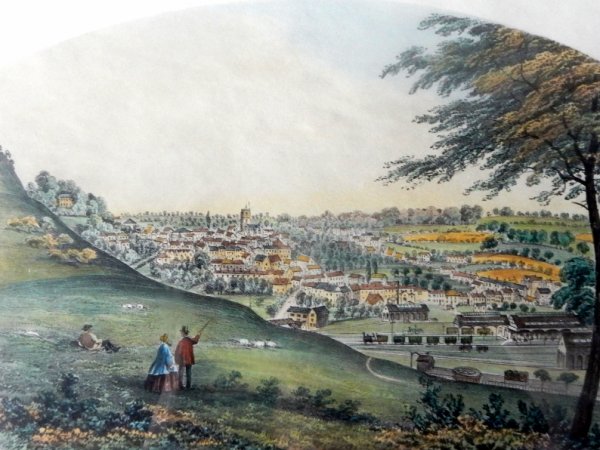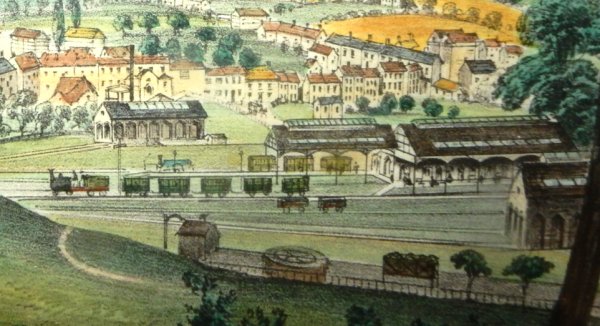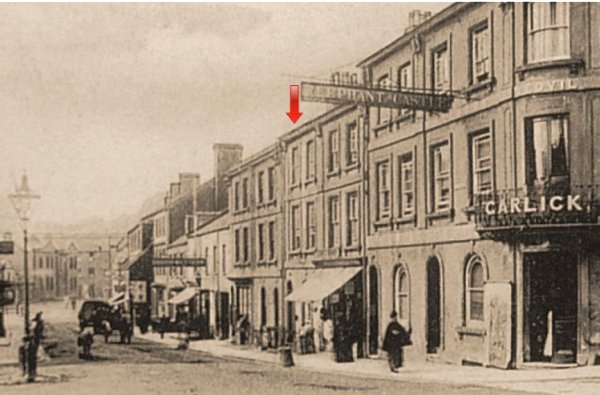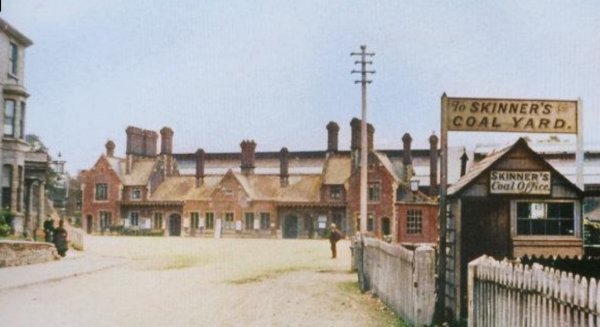yeovil people
william skinner
Railwayman, Beerhouse Keeper and Coal Merchant
William Skinner was born in Exmouth, Devon, about 1819. In the 1851 census he was living at Bishops Hull, Somerset, with his Tiverton-born wife Jane, children Ellen and William and his widowed father Robert, a retired house servant. William gave his occupation as a railway labourer.
During the following decade he moved his family to Yeovil, presumably following a railway career for in the 1861 census he was working as a railway inspector, presumably at the newly-opened Yeovil Town Railway Station. At this time he was living in Middle Street, two houses away from Commercial Buildings in Middle Street. Commercial Buildings were where the William Dampier now stands and it is likely that William lived in the first house next to the Railway Inn. Living with him was Jane and three children - Emma, Walter and Frederick with no sign of Ellen and William. Within a year of two the family moved along the road to the South Western Arms.
Here William opened a beerhouse and is mentioned as a beer retailer in several Kelly's Directories between 1866 and 1875. I would assume that Jane pretty much ran the beerhouse, at least during the day, as during this period William must have been very busy setting up a new enterprise.
Having worked for many years on the railways, William Skinner obviously appreciated the importance of coal to the new transport system. From working as a railway inspector in 1861 at the newly opened Yeovil Town Railway Station, seen in the photograph below, by 1871 he was listed in the census as a coal merchant and cannily located his coal yard in Station Road, adjacent to the railway goods yard.
By 1881 William, Jane and son Frederick had moved to 9 South Western Terrace, opposite their coal yard. Both William and Frederick were listed as coal merchants and Frederick was to continue running the coal yard business after his father's death in 1888 at the age of about 69.
gallery

From my
collection
This hand-coloured lithograph, entitled "View of Yeovil from Newton Hill" overlooking the new Yeovil Town Railway Station was made about 1861 (clearly just after the Town Station opened). Drawn by artist and Lithographer Edward Holton Buckler, it was published by Thomas Willy Vincent of Yeovil.
This sketch from Summerhouse Hill overlooking the new Yeovil Town Railway Station was made about 1860 at exactly the time career railway man William Skinner was working as a railway inspector at Yeovil.

From my
collection
This enlargement of the previous sketch in monochrome shows the detail of the train and station much clearer. I'm not sure which came first - the colour or monochrome version.

William Skinner's beerhouse is arrowed in this sepia toned photograph of 1905. The right hand side of the photograph is dominated by the Elephant and Castle and, just left of centre, the two-storey building with the large projecting sign is the Southwestern Arms.

This
image
features in my
book 'Yeovil
- The Postcard
Collection'.
This colourised photograph was taken about 1910 and looks along Station Road. Having worked for many years on the railways, William Skinner obviously appreciated the importance of coal to the new transport system. From working as a railway labourer in 1851 and rising to become a railway inspector in 1861 at the newly opened Yeovil Town Railway Station, seen here at centre, by 1871 he was listed in the census as a coal merchant and cannily located his coal yard, seen here at right, adjacent to the railway goods yard. At left is the Alexandra Hotel. At the time of this photograph the coal yard was run by William's son, Frederick Skinner.